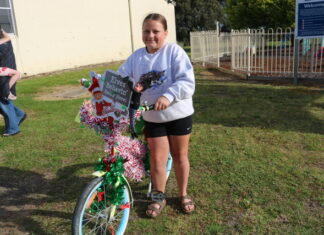THE Limestone Coast may pilot a nationwide migration program designed to tackle workforce shortages and population decline through locally-led migration strategies.
Representatives from the region, including Limestone Coast Local Government Association, along with leaders from Hamilton, Warnambool and Nhill, recently met in Canberra to discuss avenues of support for communities looking to welcome migrant workers.
The Rural Migration Initiative is supported by five regional areas across Australia, including Victoria’s Great South Coast, the Dubbo region in New South Wales, Darling Downs farming region in Queensland and Kalgoorlie in Western Australia.
The initiative, developed by local leaders including Limestone Coast Migrant Resource Centre manager Anelia Blackie, along with the Regional Institute Australia, aims to relocate migrant families who wish to work and live in rural areas.
Limestone Coast Local Government Association executive officer Dominic Testoni said the initiative had been welcomed by federal, state and local governments while in its infancy.
“We were very fortunate we had some fairly high ranking people attend the meeting and there is definitely an appetite to look at a national migration policy,” he said.
“The initiative looks at migration from a community up approach rather than a policy initiative, which looks at what they need on the ground to actually attract and retain migrants.”
Mr Testoni said a key focus of the initiative would be driving “secondary migration”, or the voluntary movement of a person from their first location to another location within Australia.
“There has been a long trend in migration patterns in Australia for migrants to move to the cities,” he said.
“One of the things we need to focus on is how we can tap into secondary migration and get them out to the regions.
“A lot of migrants are from rural and regional areas originally and sometimes it is just a matter of not being aware of what is available in the regions.
“There is talk of a hidden job market where a lot of the positions largely go unadvertised in rural and regional Australia and we need to think about how we open that up.
“It is really about the skills shortages across a range of local industries and addressing the skills gap in the region.
“It is not about taking the jobs of Australians – it is about filling the jobs we are not able to fill – including blue collar and white collar as well.”
Mr Testoni said although the region had some settlement services, a stronger focus on programs and investment in allied services would be among the region’s priorities.
“Part of the initiative is about the attraction and retention and identifying who is actually working with migrants to try to integrate them so when their visa expires, they do not catch the bus to Brisbane,” he said.
“If you work with migrants as they come into the region, it can assist in retention rates.
“Our settlement services provide help for about eight to 10pc of the migrant intake and while there are a lot of community and volunteer allied services, we need to focus on how to provide support for the services.”
Mr Testoni said the Regional Australia Institute was developing a discussion paper to be presented to the Federal Government in the near future.





